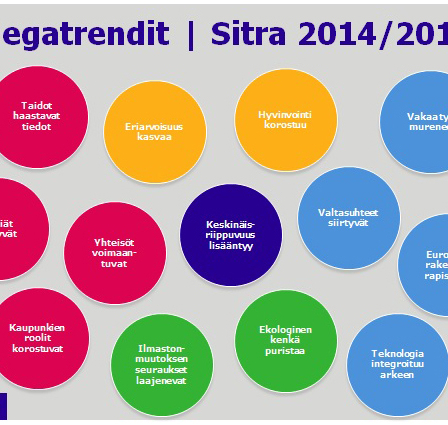Apart from the obvious way in which sabbaticals benefit the individuals concerned, could taking a break from work also have other, broader benefits? While the positive sides of sabbaticals and job alternation leave relate to coping at work and the unemployment situation, they also concern ecological sustainability.
I am starting a year of job alteration leave (a form of sabbatical) at the beginning of December. I consider myself fortunate to have this opportunity, since people on low incomes would find the prospect financially daunting, and fixed-term employees simply do not have the option.
Just after signing my job alternation agreement, I found out that David Roberts, a writer – whom I have greatly admired – for the environmental news site Grist.org, had just finished a year-long sabbatical. Roberts was wiser than me: he took his sabbatical at forty, giving him the chance to spend more time with his kids while they were still small. I have already turned fifty and my children have grown up.
One of David Roberts’ objectives during his sabbatical was to work on a novel, and I have the same ulterior motive. Let’s see how it goes in my case – Roberts never finished his novel.
Roberts decided to ditch the novel and enjoy his sabbatical, and the fact that he could live his life without being reachable at all times. He writes: “A great many people would like to take a break from their hyper-networked lives, but few have a concrete plan as to how they would use such an opportunity. This is not surprising considering that white-collar workers are almost universally expected to be reachable twenty-four hours a day – including nights, weekends and holidays.”
You probably know someone who has taken job alternation leave (or study leave). Ask them if they are glad they did it! I bet that the answer is “yes”. At least that’s the only answer that I have heard so far.
But does job alternation leave also have other, broader benefits than those experienced by the individuals concerned?
I think it does. I am not alone in believing that tightening up on job alternation leave seems very short-termist.
When I go on job alternation leave, someone else gets a job for a year. Unemployment in Finland currently stands at 8.2%, which is unacceptably high. The basic idea underlying job alternation leave is to improve the unemployment situation.
People working in expert organisations see another important reason for taking such leave. It has been proven that taking a year off helps people to maintain and boost their creative and innovative capacity. Many of the world’s top universities even encourage teaching staff to take a sabbatical every seventh year or so.
Finnish scholars also believe that, in general, job alternation leave has a positive effect on well-being and coping at work. A workplace can become more energised when a new employee is hired, but an employee returning refreshed from a break can have the same effect.
Sometimes I feel that job alternation leave should be mandatory. Too many of us become worn out too soon. For example, a little while ago the (now former) CEO of Valio announced that he would retire at the age of 58 due to exhaustion. He went on to explain this decision by saying that “I have been working non-stop for 36 years.” In an article from last summer, the CEO also mentioned that he has many friends of the same age who “have left the office”. Although the article does not say so, this clearly refers to early retirement rather than alternation leave.
In his speech at the TED conference (over two million views), designer Stefan Sagmeister, who closes his New York studio to take a year-long sabbatical every seven years, proposed an interesting pension system reform which would be economically neutral in principle. This would involve raising the normal retirement age by five years, but those five years could be used for sabbaticals taken, say, every seven years.
Job alternation leave would also be a step in the right direction from the point of view of ecological sustainability. For example, in the opinion of Jørgen Randers (the author of the original Limits to growth report and 2052 – A Global Forecast for the Next Forty Years, published in 2012), the most promising way of avoiding a bleak future will probably involve reducing the number of hours and days worked.
This is because other means – including a major hike in taxes or fuel prices in order to limit growth in production and consumption and thereby rein in emission growth – will not, Randers believes, gain acceptance among the majority of people in rich countries. Instead, cutting the number of hours worked by individuals, for example by increasing the amount of annual holiday or other types of leave, could gain popular support since, unlike other emission-cutting methods, this would not involve the fear of higher unemployment. If individuals worked fewer hours on average, the work available could be divided between a higher number of people.
I will return to work in December 2015. Let’s see then whether I feel that my alternate leave was time well spent. I promise to take a leaf out of David Roberts’ book and write a blog on my experiences!



Recommended